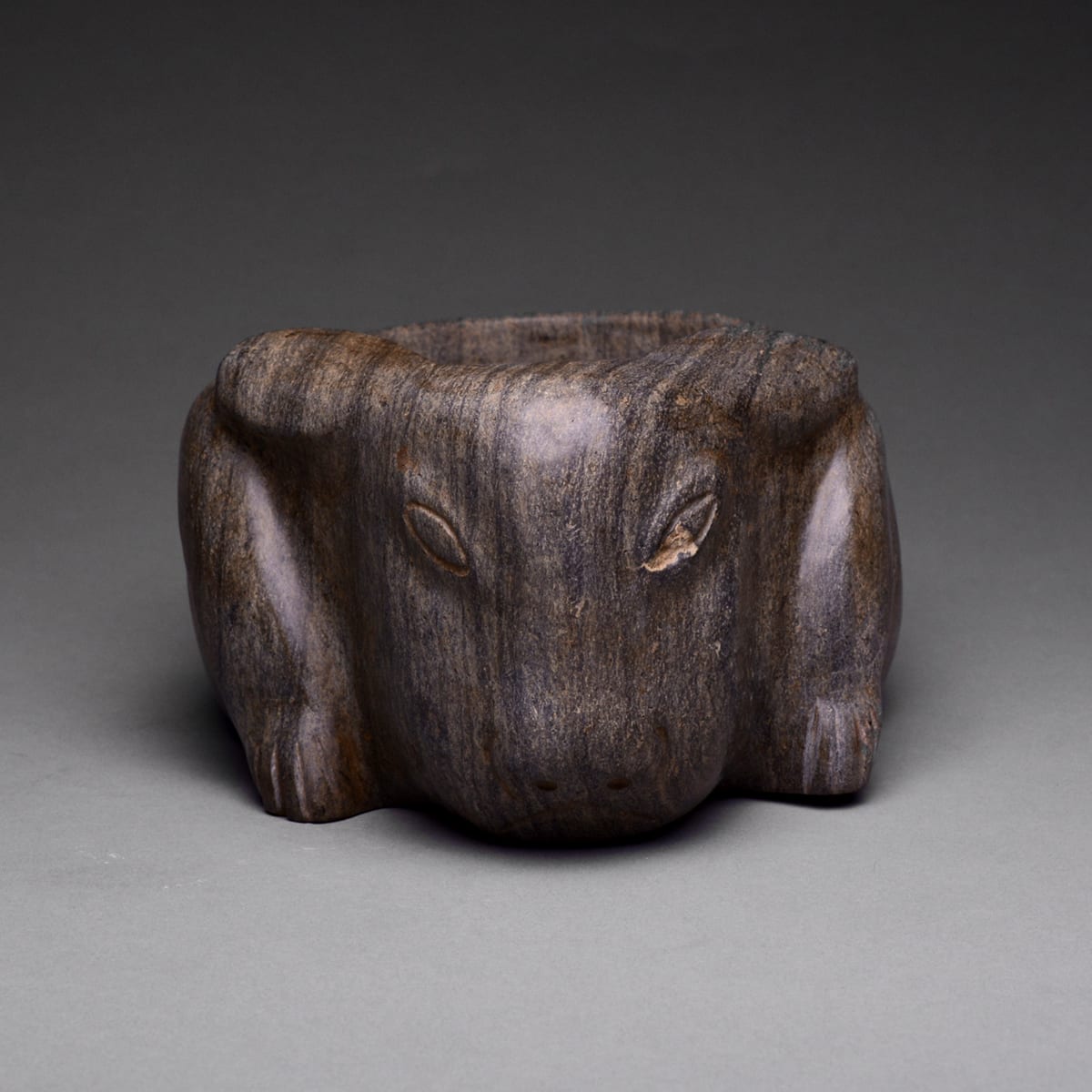Aztec Stone Rabbit, 1250 AD to 1550 AD
Stone
12.7 x 24.1 cm
5 x 9 1/2 in
5 x 9 1/2 in
MT.264
Further images
This stone rabbit, created by the Aztec culture, has been carved to emphasize vertical patterns in the stone that closely resemble the gray fur of a rabbit. The size of...
This stone rabbit, created by the Aztec culture, has been carved to emphasize vertical patterns in the stone that closely resemble the gray fur of a rabbit. The size of the piece is nearly that of an actual rabbit, and has smoothly curved face, ears, and paws. The top of the work has a large, round bowl shape incised into it, allowing for the bearer to grind food (like a mortar and pestle) or to store an object.
Aztec stone sculpture is the culmination of a long Mesoamerican tradition in the carving of a variety of monuments and objects from stone— from ordinary volcanic rock to highly prized semi-precious stones such as jade. The tradition began with the Olmec peoples of the Gulf Coast in the second millennium B.C., and possibly earlier than this. Thousands of Aztec sculptures, ranging from intimately scaled, personal works to public monuments standing up to ten feet tall, were carved both in the round and as reliefs. Many still exist despite massive the Spaniards’ efforts at destruction of Aztec sculptures, considered to be heathen idols.
Aztec carvers used simple stone and hardwood tools, fiber cords, water, and sand to carve hard stones into works that ranged from barely hewn rocks to intricately detailed, superbly finished masterpieces.
Aztec stone sculpture is the culmination of a long Mesoamerican tradition in the carving of a variety of monuments and objects from stone— from ordinary volcanic rock to highly prized semi-precious stones such as jade. The tradition began with the Olmec peoples of the Gulf Coast in the second millennium B.C., and possibly earlier than this. Thousands of Aztec sculptures, ranging from intimately scaled, personal works to public monuments standing up to ten feet tall, were carved both in the round and as reliefs. Many still exist despite massive the Spaniards’ efforts at destruction of Aztec sculptures, considered to be heathen idols.
Aztec carvers used simple stone and hardwood tools, fiber cords, water, and sand to carve hard stones into works that ranged from barely hewn rocks to intricately detailed, superbly finished masterpieces.







